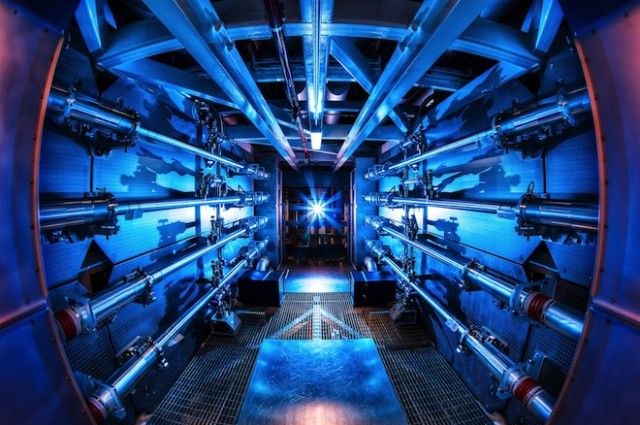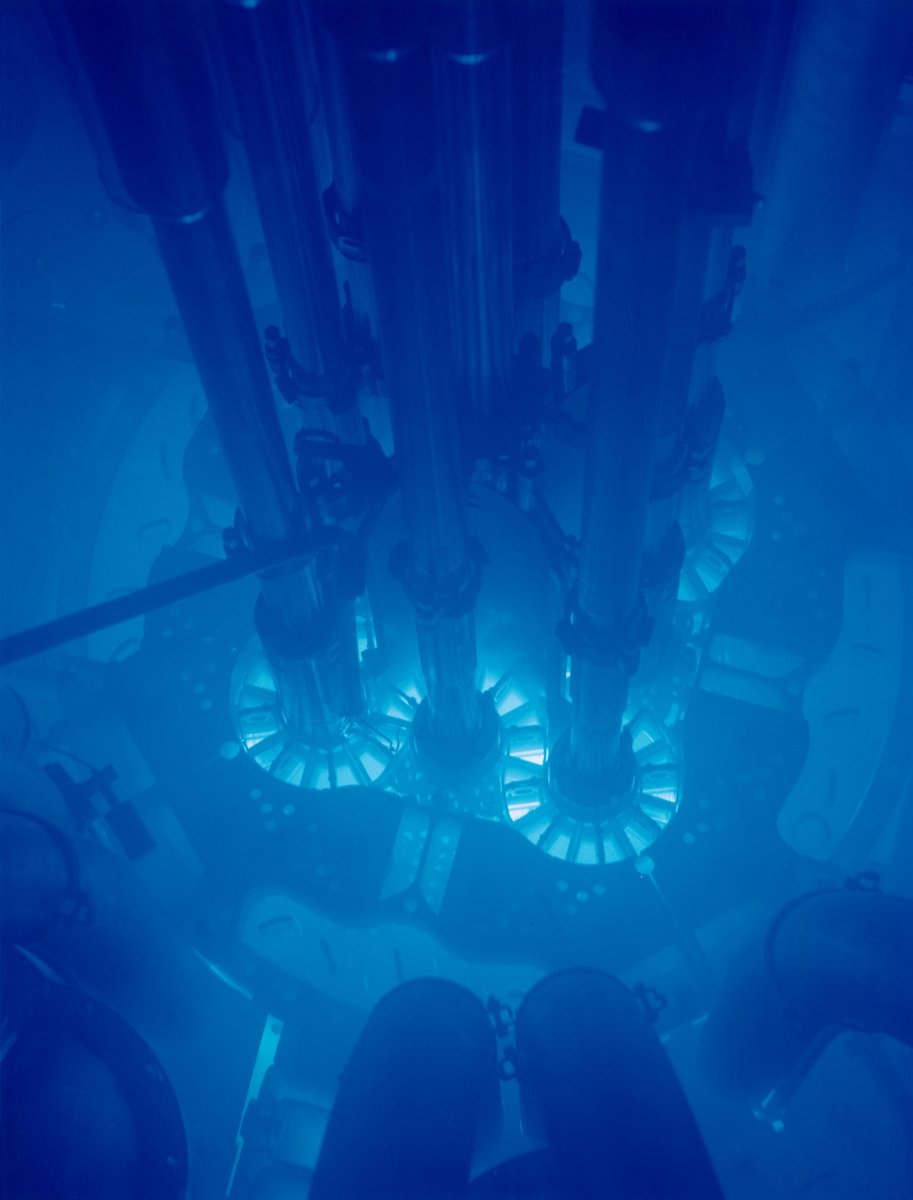
So a certain space/tech person commented some misunderstandings about fusion fuel cycles recently and I figured I would make a thread outlining the *actual* reality of the 4 fusion fuels being considered (DT, DD, DHe3, and pB1) and clear the air. 🧵1/23 



So we will start with DT, the "easiest" fusion fuel mix to get net energy from and BY FAR the most likely fusion fuel to be used in any reactors of any kind in our lifetime. This fuel mix is deuterium (H-2, heavy hydrogen) and tritium (H-3, radioactive heavy hydrogen). 2/23 

What is cool is we KNOW this fuel can work since thermonuclear weapons utilize it and get net energy, plus the NIF laser facility recently ignited a capsule! That is a huge leap over some other fusion fuels. 3/23 journals.aps.org/prl/abstract/1…
The two big downsides are the neutron production (~80% of the energy is high energy neutrons) and the short half-life of tritium. We can't mine tritium since it has a ~12 yr half-life. It is produced in the air by cosmic rays, but good luck getting enough to matter! 4/23
Tritium is bred either as a by product in CANDUs (basically all fusion experiment fuel) or on purpose via lithium rods in LWRs (basically all weapons fuel). CANDUs make 2.2E-4 kg/FPY/MWe on average, which means a typical CANDU unit will provide ~0.18 kg/yr. 5/23
Something like ITER needs 12 kg of tritium to start and a 1 GWe fusion reactor would eat ~140 kg/yr of tritium. So just using CANDU by products won't get us much! All of the CANUD-like reactors in the world wouldn't supply a single fusion reactor! 6/23 nucleus.iaea.org/sites/fusionpo…
So the *actual* plan is to use those handy neutrons from DT fusion to bred more fuel in the reactor, just like a fission breeder! In this case lithium (often mixed with lead for multiplication of neutrons) is used to absorb neutrons and make tritium. 7/23 

This means no radioactive material is shipped in or out of the plant ideally, although there will need to be a serious tritium handling plant to efficiently pull tritium out of the blanket. With ratios only as theoretically good as 1.2, you can't waste a single atom! 8/23 

This also means the power plant will ideally need to be very large to handle the added cost of this fuel handling and of course the facility for it! How much tritium you circulate will depend on reactor type, but expect at least grams up to many kg! 9/23
The next fuel to consider is DD, also sometimes called D2. This is the pure nuclear burning of deuterium (H-2) and can occur in a variety of ways. It also has been proven to work in the Ivy Mike nuclear device! It makes quite a lot of neutrons, but no where near DT levels. 10/23 

I won't get into the complexities of DD ignition and burning, but needless to say it is harder than DT! The advantage is you get to use non-radioactive deuterium that you can get out of any glass of water! There is no need for breeding and as such things get easier! 11/23 

There are ideas where you ignite DD with a DT "spark plug" in pulsed concepts, but that would need very little DT and could potentially even get by with CANDU by products! Still, the end result is the fuel cycle involves little to no radioactive fuel handling. 12/23
The reactor and reactor components will of course become horrifyingly radioactive, but that is what robot repairs are for! If we pick our materials right nothing should stay horribly radioactive for more than a century or so. 13/23
The next fuel to talk about would be DHe3. Now this makes a lot fewer neutrons than the previous two, but there still WILL be neutrons from DD side reactions. This uses an extremely rare isotope of helium (He-3) with our old friend deuterium. 14/23 

It is easier to ignite than DD *in theory* although we have yet to show that in practice. Part of the issue is it is still much harder than DT and He3 is some rare stuff! He3 is the stable decay product of tritium, making it just as rare! 15/23
Since DHe3 doesn't make as many neutrons as DT, we also can't bred more He3 in the reactor! The only option is to make it via other methods for specialist uses or go get it out in the solar system where it is more common. 16/23
He3 can be made by making tritium and letting it decay (CANDUs are starting to sell it) or by extraction from DD fusion reactors to prevent the He3 burning in the reactor. Some fusion companies are looking into this. 17/23
ans.org/news/article-3…
psatellite.com
ans.org/news/article-3…
psatellite.com
There is also lots of He3 in the gas giants! The old Project Daedalus fusion rocket proposed mining He3 from Jupiter! Saturn, Uranus and Neptune would also all be great options, but this is obviously super futuristic. 18/23
en.wikipedia.org/wiki/Project_D…
en.wikipedia.org/wiki/Project_D…

There is also the old "mine the Moon for He3" idea. It is INCREDIBLY silly and I even have a fun NSS paper outlining why, but it just simply makes no sense. There is not that much He3 on the Moon and it is hard to get! 19/23 space.nss.org/wp-content/upl…
The final fuel to discuss would be pB11. Now first and foremost I need to state that it is controversial if this fuel can EVER be used for net energy! The physics are unclear and the gains will never be high. Still, a lot of people are looking into it so I'll cover it! 20/23 

pB11 uses protium (H-1, normal hydrogen) and boron-11 (an isotope of boron). Both are stable and available basically everywhere on the planet (and in the solar system). There are few neutrons (not zero though, since secondary reactions happen), but a good gamma ray flux. 21/23
Since the fuel is common and easy to get, just like with DD, you would just mine, enrich and send it to the plant. Nothing special here! The reactor would also be less activated for a given age and power level, but probably not enough to matter when it comes to burial. 22/23
If you want to learn more about supply of fusion fuels, check my thread out from earlier this year. The short and sweet of it is the supply is basically infinite, just like with fission! 23/23
https://twitter.com/GBruhaug/status/1480693566418698240?s=20&t=JMdXrGIamv_rrsoE9Ge0pg
• • •
Missing some Tweet in this thread? You can try to
force a refresh






